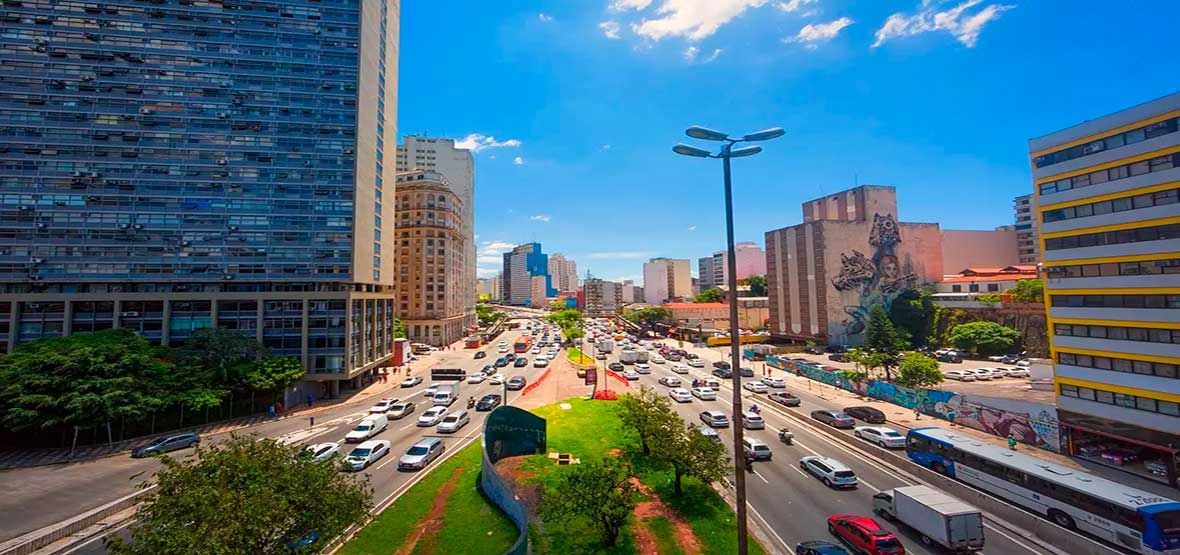Tourism in São Paulo
Tourism in São Paulo has much more to offer than you might imagine. Although, when arriving in the city and seeing the amount of buildings and people going to and fro, many people think that there is only business tourism, you soon discover that there is a lot to do in terms of leisure tourism.
The city, one of the largest metropolises in the world , is always busy whether day or night and always has many options for tours. There are hundreds of tourist attractions, such as parks, museums, shopping centers, restaurants, bars, nightclubs, concerts, and much more.
In addition, São Paulo is a very democratic city – perhaps a reflection of the great mix of Paulistas with migrants and immigrants. This means that there are options for all ages, all styles of travelers and that fit any size budget.
Apart from all that, São Paulo is a beautiful city , in my opinion.
Want to know more about tourism in São Paulo? See in this article the main sights of the capital of São Paulo, a little of its history, climate, time zone and much more.
All about Sao Paulo

São Paulo is the capital of the State of São Paulo and the most populous city not only in the state, but also in Brazil, the American continent and the Southern Hemisphere, in addition to being the 8th city with the most inhabitants in the world. In 1,500 km², more than 12 million people live.
And that's not all, São Paulo is the main financial, corporate and commercial center in South America, the most influential Brazilian city in the world, in addition to being elected in 2016 the 11th most globalized city in the world. There are 63% of multinationals in Brazil, the 5th largest stock exchange in the world and it is still the 10th largest Gross Domestic Product (GDP) in the world.
It was the first city in the Southern Hemisphere to be considered a megalopolis and today it is on the list of alpha global cities, which are those whose economy and development directly affect global development.
More about the history of the capital

Before being a megalopolis, São Paulo was already a very poor village.
When the village was founded by the Jesuit priests, in 1554, there was nothing nearby, besides being difficult to cross the Serra do Mar (which divides the capital of São Paulo from the coast) on foot. For this reason, at the time of the first settlement, in 1560, it was considered inland and isolated.
In 1683, it became the capital of the captaincy of São Vicente and a base for expeditions by the Bandeirantes, a group that explored the surrounding lands, hunted Indians and even looked for gold and diamonds in the hills where today is Minas Gerais. When gold was discovered in Minas, São Paulo was in evidence. And it became a city in 1711.
The city grew economically in several cycles : first the Gold Cycle, then the Sugarcane Cycle and, finally, the Coffee Cycle. After Brazil's independence, it became an imperial city, which helped with its development.
In 1827, a legal course was created at the Convent of São Francisco, where today the Faculty of Law of Largo do São Francisco is located.
Then came the railroads and in the 19th century many immigrants and the first industries began to arrive. Since then, the city has not stopped growing until we reach the point of a megalopolis.
Other information about São Paulo

With a humid subtropical climate, the destination was once called Cidade da Garoa, but today it is not quite like that. The high levels of pollution in the capital of São Paulo and the large number of buildings have left the city increasingly stuffy and grey.
The average annual temperature is 20ºC and the seasons are relatively defined. The summer is hot (less than Rio de Janeiro and other cities in the Northeast) and very rainy and the winter in São Paulo is mildly cold (compared to the south of Brazil) and drier. February is the hottest month and July the coldest month.
The capital of São Paulo follows the official time of Brasilia and the time zone is minus 3 hours from zero in Greenwich, London. The telephone code is 11.
To travel to Brazil, foreigners from some countries need a visa. Those who do not require a visa from Brazilians also do not need it, but countries that require an entry visa also need a visa to visit Brazil.
What to see in São Paulo

São Paulo is a city with great cultural effervescence and, therefore, the list of activities is almost endless and always changing. There is always something to do among the main tourist attractions in São Paulo .
It is worth visiting the most visited attractions in the capital, such as Avenida Paulista, the museums in São Paulo , the Sé Cathedral, the Municipal Market , and the best parks in São Paulo .
But there are many others like Pico do Jaraguá, the highest point at 1,135 meters, dams, football stadiums, the Municipal Theater and more.

Ibirapuera Park
São Paulo travel tips
I don't know if with all the classifications above you can understand the proportions and importance of São Paulo, but know that Selva de Pedra is a wonderful city, full of attractions. In fact, the colonial architecture and modern buildings are part of the charm of the city, which is also used for tourism.
Not to mention the green areas, the many malls, the popular shopping areas such as 25 de Março, the various theaters and much more. The city hosts the main international concerts, musical shows, sports activities and much more. It is super worth knowing the capital of São Paulo.